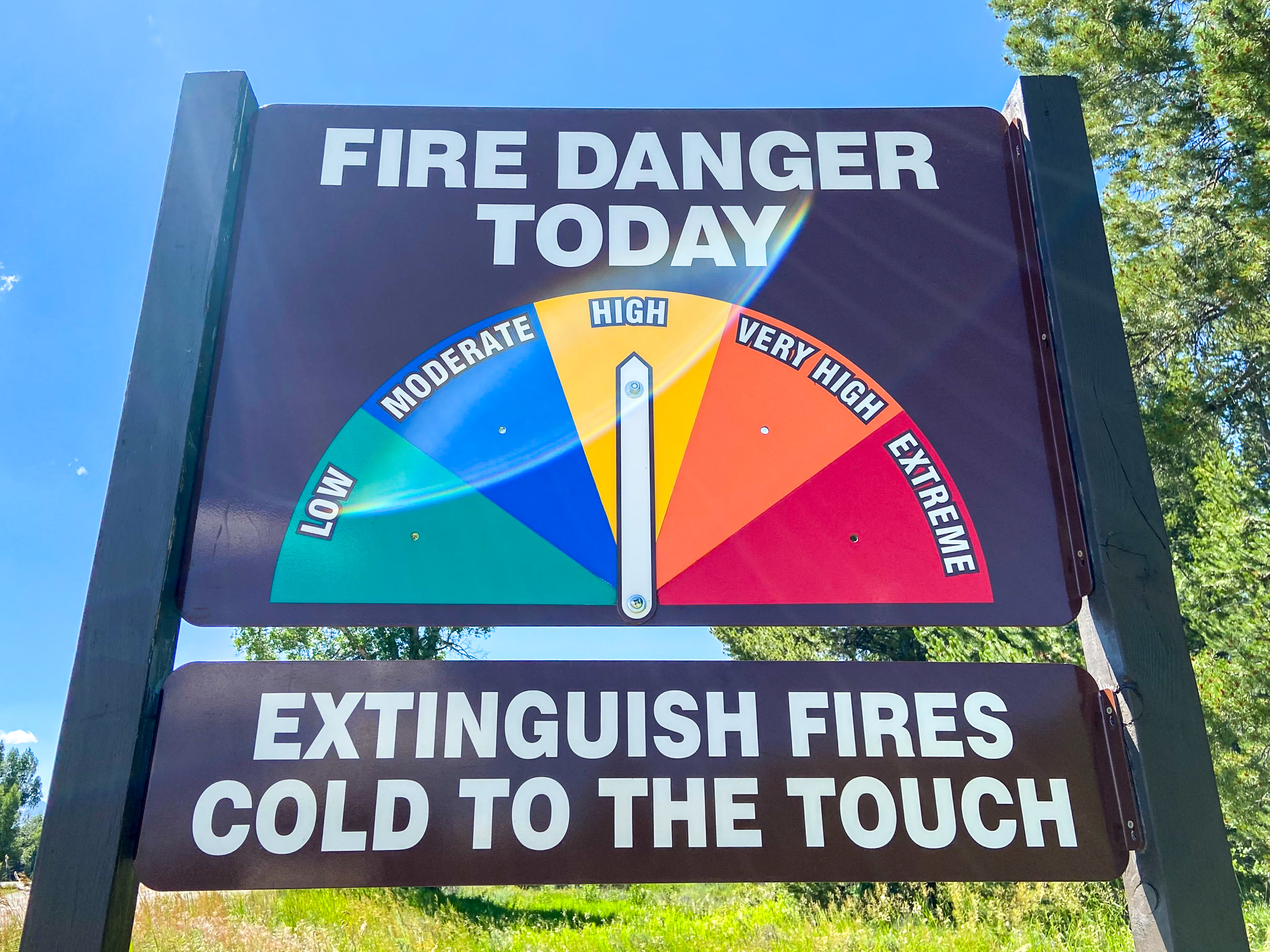News Release

|
Subscribe
|
While the landscape may still appear green and recent weather has included rain and cooler temperatures, heavy dead and down timber and fuels are what drive fire activity. That’s exactly what is fueling the 2,250-acre Horse Fire on the Bridger-Teton National Forest, and similar fire behavior is expected in the coming weeks. Firefighters have already responded to six fires in the Teton Interagency zone this year.
A high fire danger means wildfires can start easily and spread quickly. Fire managers consider things like fuel moisture (how dry grasses, shrubs, and trees are), forecasted temperatures and wind, how fast fires can grow, and whether firefighting resources are available nationwide.
What You Can Do
The safest option is to not build a fire at all. Dress warmly and use layers instead of relying on campfires for warmth.
If you choose to have a fire in areas where it's allowed:
- Never leave a campfire unattended.
- Have a shovel and water bucket on hand.
- Use several gallons of water to fully extinguish your campfire.
- Drown, stir, feel and repeat until the ashes are cold to the touch.
- Break up charred logs and cover all remains with dirt.
Fireworks Are Always Prohibited
As we approach the Independence Day holiday, a reminder: fireworks are strictly prohibited in Grand Teton National Park, the Bridger-Teton National Forest, and the National Elk Refuge. These regulations are essential to preventing wildfires during a time of heightened risk.
For the latest fire updates, safety tips, and current restrictions, visit TetonFires.com.
To report smoke or a fire, call the Teton Interagency Fire Dispatch Center at 307-739-3630.
—END—
Last updated: June 25, 2025
